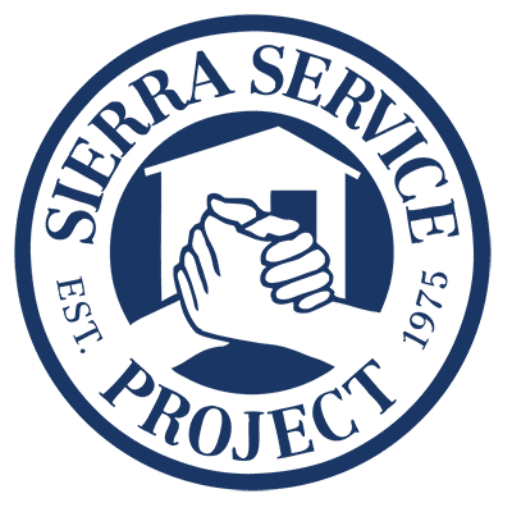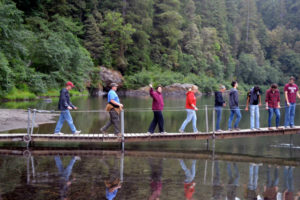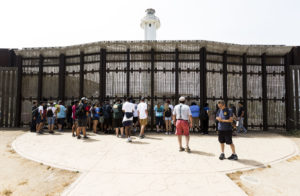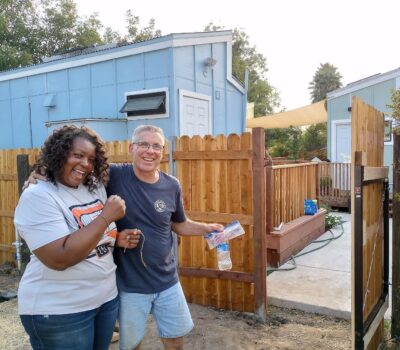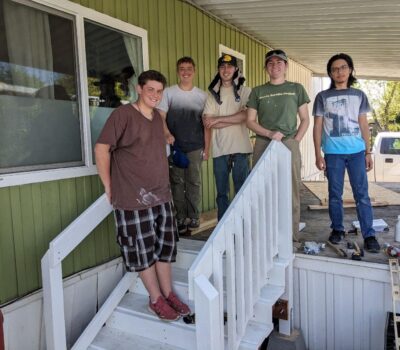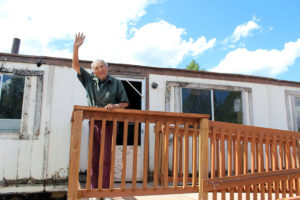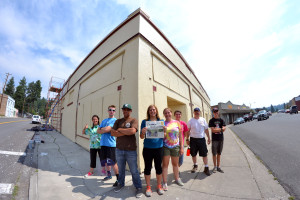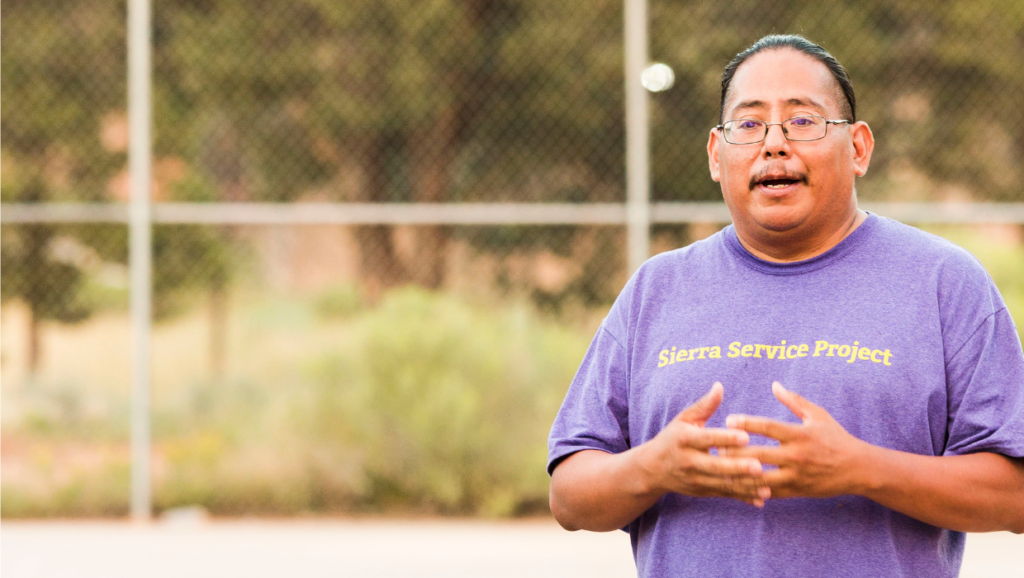
What is Advocacy?
A life of service is more than a one-way transaction. Impactful service requires reciprocity, partnership, and accompaniment, working and learning alongside communities and individuals. At SSP, we believe everyone has something valuable to both offer and receive in community with others.
To support communities in a way that is transformative for everyone involved, SSP encourages volunteers to explore the concept of advocacy.
Simply put, value-rooted advocacy is supporting and speaking up about issues important to you. Advocates elevate the voices of the traditionally unheard, impact public conversation, and lead solution-oriented change. They promote creating a place at the table for everyone.
When engaging in advocacy, please remember to always create space for those directly affected by the issue to speak on their own behalf where possible, if they want to share. Many communities like the ones SSP works with are not given a natural platform to speak and be heard by those who can effect change. As partners with these groups and individuals, it is our role to ensure we are careful not to speak over, or for, them.
Read SSP’s inclusion statement on the “About SSP” page.
How Do I Become An Advocate?
There are various ways to advocate for a cause or issue you care about. The good news is anyone can be an advocate! Explore the menu below to learn about ways you can support issues important to you.
Step one is to learn about the issues! Without a foundational understanding of the context behind an issue, those seeking to help may have an incomplete view of how to advocate successfully.
- What are the challenges facing the community?
- Who is affected most?
- Are those affected already speaking up? Are they being heard?
- What historical context impacts the community today?
- What individuals or organizations are already promoting change?
- What solutions have been suggested, or are already underway?
- Ask these individuals and organizations about ways you can support their ongoing work.
Remember this is not an exhaustive list of questions. Stay curious and continue to learn more as you engage in advocacy!
After you have educated yourself, educate others! Tell the story and spread the news in your network about:
- What issue you are advocating for
- Causes of the issue
- Solutions to the issue
Remember that part of raising awareness is providing a platform for those affected by an issue to speak for themselves. Explore ways you can facilitate space for organizations and individuals already connected to the issue to share their own story.
How? You’ll need to decide what channels will work best for you to raise awareness in your network. You might choose to connect with people via:
- Social media (Instagram, Facebook, Twitter, Snapchat, etc.)
- Direct email (your family, friends, or professional network)
- In person (a table or booth at your school, print flyers, host a meeting in your home)
Get involved!
- Empower the individuals and communities affected
- Facilitate connections (families to services or resources, constituents to legislators, etc.)
- Share what actions your network can take (as individuals and communities) to help resolve the issue
- Volunteer with organizations working towards implementing solutions
- Find like-minded individuals and organizations you can partner with to improve services
Lobbying means getting involved in the policies and funding that impact the issue you care about. When you lobby, you are seeking to influence policy and funding sources on behalf of the cause you are advocating for.
Some ways you can lobby are:
- Contact your local and state representatives
- Petition for changes in policy
- Secure resources by contacting donors whose funds influence the issues you care about
Advocating with SSP Communities
Sierra Service Project exists to strengthen connections in and between communities. We will always seek to create space for those not traditionally “invited to the table.” By connecting youth to people with a culture and life experience different from their own, we hope our volunteers will be empowered to partner with these communities as advocates.
Advocating with SSP communities will look different for each location – the culture, history, and community of each site range widely! There are, however, a few common threads in all the locations where SSP serves:
- Substandard housing
- Food access
- Access to services for aging individuals
- Many families and individuals living at or below the poverty line
Below you will find more site-specific resources to guide you in getting started as a partner in advocating alongside the specific communities you have come to care about and love at SSP.
Del Norte County, CA
Learn about issues facing Del Norte County at our rural site in coastal northern California. This includes cities such as Crescent City, Smith River, and Klamath.
Learn about work local to Del Norte County:
San Diego, CA
Learn about issues facing the urban communities of San Diego’s South Bay, including the cities of Imperial Beach and National City.
Year-Round Partner Communities:
North Sacramento, CA
Learn about issues facing the North Sacramento neighborhood of Sacramento County, where SSP’s office is located:
Rancho Cordova, CA
Learn about issues facing the City of Rancho Cordova in Sacramento County, nearby SSP’s offices:
Inactive Sites:
Navajo Nation (Tsaile, AZ)
Learn about historical, socioeconomic, and agricultural issues facing the people of the Navajo Nation in northeastern Arizona.
Learn about work local to the Tsaile Wheatfields Blackrock Chapter:
Chiloquin, OR
Learn about issues facing the community at our rural Chiloquin site in southeastern Oregon.
Lake County, CA
Learn about issues facing the region and residents of Lake County, and local coalitions dedicated to the holistic well-being of the community.

